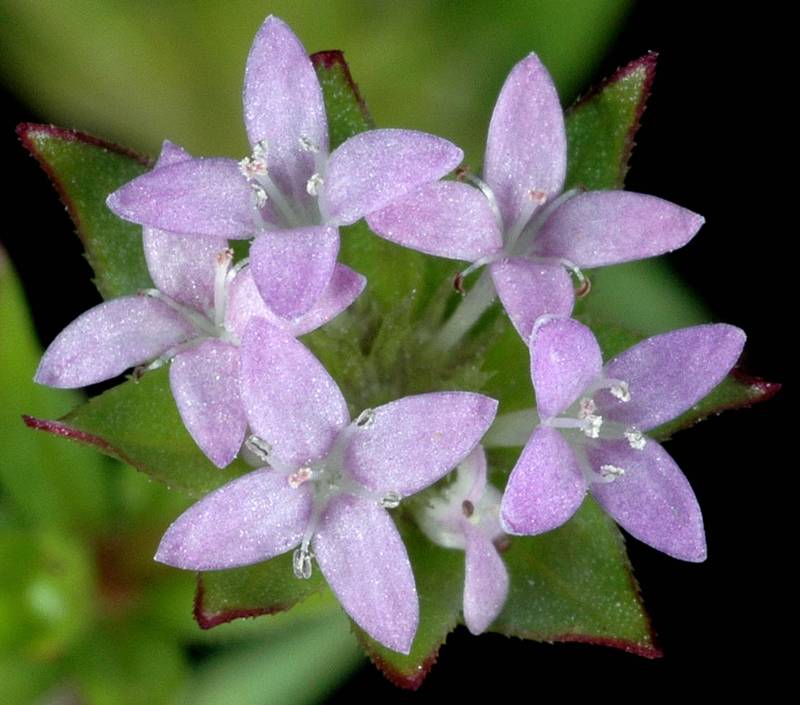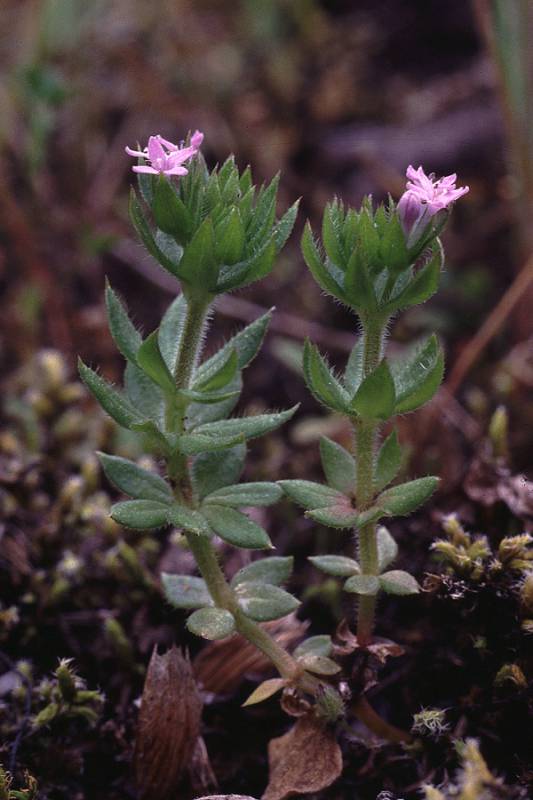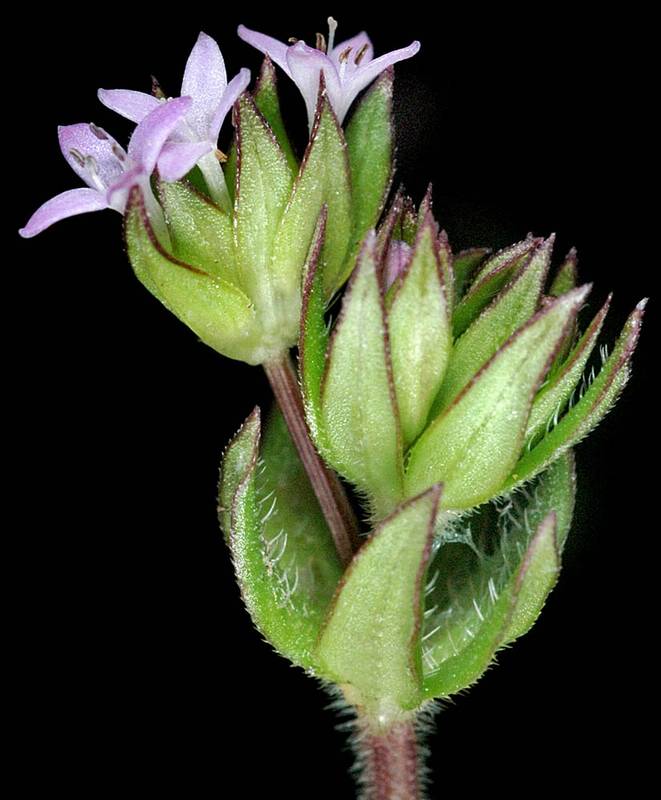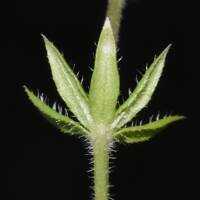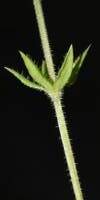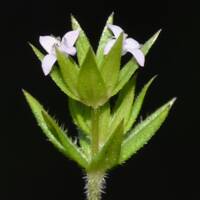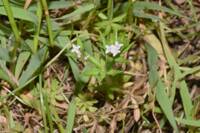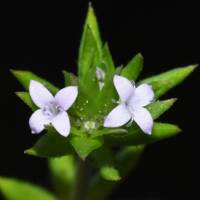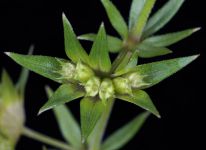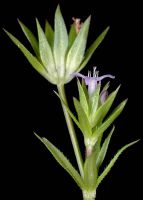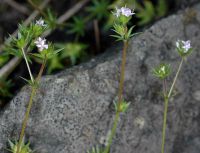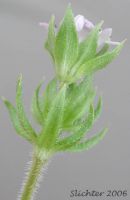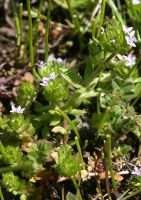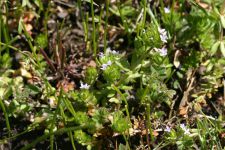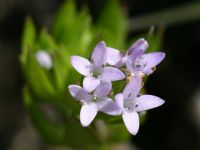Distribution: Occurring chiefly west of the Cascades crest in Washington; British Columbia to California, east to Idaho and Nevada; also in south-central and eastern North America.
Habitat: Weed of prairies, meadows, and other open, disturbed areas.
Flowers: April-July
Origin: Introduced from Mediterranean
Growth Duration: Annual
Conservation Status: Not of concern
Slender annuals 0.5-3 dm. tall, the stem simple or branched at the base, scabrous or with spreading hairs.
Leaves in whorls of 6, 0.5-2 cm. long, narrowly elliptic and pointed, with stiff, short hairs above and scabrous beneath.
Flowers in small heads on axillary and terminal, naked peduncles with a basal involucre of leaf-like bracts 4-9 mm. high; calyx teeth 4-6, well-developed, lanceolate; corolla funnel-shaped, pinkish, 3 mm. long, the slender tube longer than the 4 lobes; style bifid at the tip; ovary 2-celled, inferior.
Fruit dry, scabrous, 2 mm. high, crowned by the persistent, pointed sepals.
Publication: Sp. Pl. 1: 102. 1753.
PNW Herbaria: Specimen records of Sherardia arvensis in the Consortium of Pacific Northwest Herbaria database
WA Flora Checklist: Sherardia arvensis checklist entry
OregonFlora: Sherardia arvensis information
E-Flora BC: Sherardia arvensis atlas page
CalPhotos: Sherardia arvensis photos

